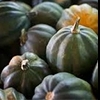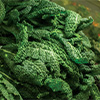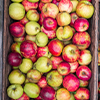
Featured Produce | Summer Quarterly 2020
Featured Produce: Sweet Corn
No matter how you classify it, corn is one of the world's most important crops. Teosinte, the wild ancestor of corn, has been found in Mexico dating about 9,000 years ago. Early corn, or maize as it is also called, consisted of ears that were just a few inches in length.
Did you know that there is always an even number of rows of kernels on an ear of corn? Each of those kernels (about 800 per ear) has its own piece of silk, too, which is the style of a flower—and that explains why corn is technically a fruit, though we treat it like a vegetable. And when corn is harvested dried, as for popcorn, it is considered a grain.
The United States produces over 35% of the world's corn, and sweet corn is grown in California and in The Corn Belt: Michigan, Minnesota, South Dakota, Wisconsin, Ohio, Illinois, Indiana, Iowa, Missouri, Kansas, and Nebraska.
There are hundreds of varieties of sweet corn, including Earlivee and Sundance (yellow), Gentleman and Stowell's Evergreen (white), Sugar & Gold and Honey Cream (bicolor). Varieties can differ in taste as well as color, with some more nutty, grassy, sweet, or milky tasting than others.
The corn we grow in our gardens and pick up at produce stands and at the co-op is sweet corn, which contains twice as much sugar and less starch than field corn. According to the USDA, 1 cup of corn contains 25% of the daily requirement for iron, half of the requirement for vitamin B6, 52% of magnesium, and 32% of protein. It is also a good source of dietary fiber and the antioxidants lutein and zeaxanthin.
Fresh corn rapidly loses sugar content once it's at room temperature, so if you're heading to the farmers’ market or Co-op, you'll want to get your corn first thing in the morning and serve it as soon as possible - definitely within a few days. Choose husks with good green color and pale, fresh silk. The rows of kernels should be tight and not dented or discolored. If you pierce a kernel with your nail, it should produce a cloudy juice. Store your corn on the cob in the husk and keep it refrigerated until you are ready to eat it.
Options for enjoying corn are almost endless. Cobs can be grilled, boiled, microwaved, or steamed. When cooking in water, do not add salt or it will toughen the kernel skins. And try cooking your corn for just a few minutes (do not boil away the flavor).
Cook extra so you can cut the kernels off the cob and use them in other dishes (or pop them in the freezer for later). Corn kernels make a great addition to salads, salsas, and relishes. Add them to quick breads, pancakes, stir-fries, pizzas, and soups and chowders.
Try this simple and easy recipe for Calabacitas using fresh and seasonal vegetables.




